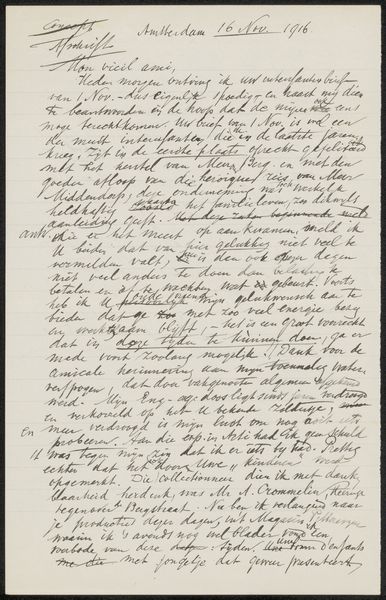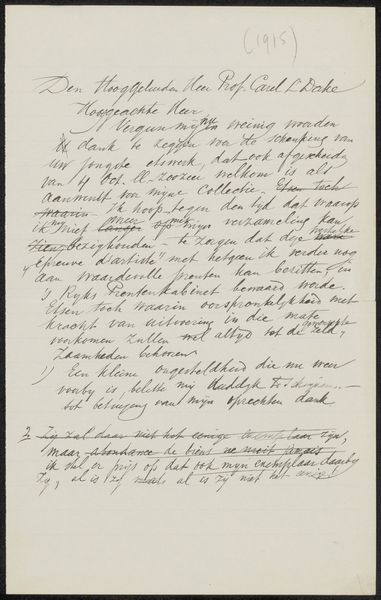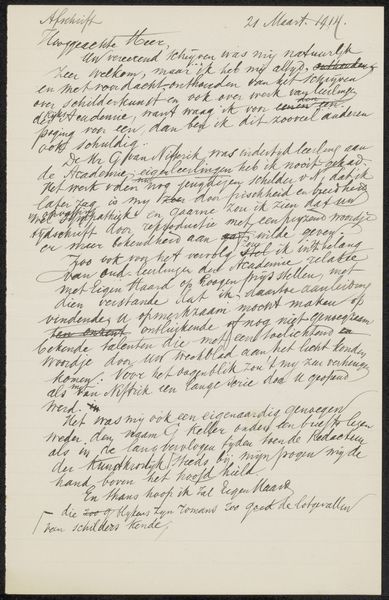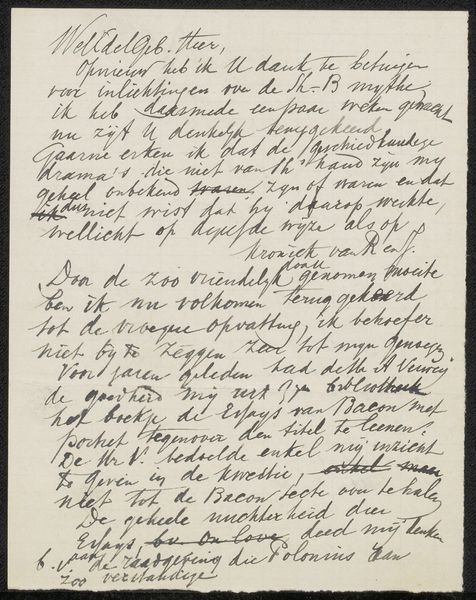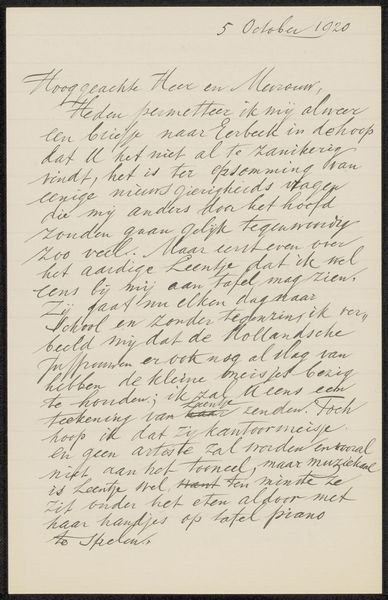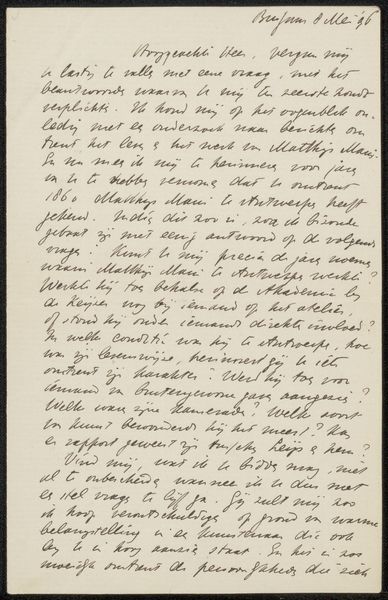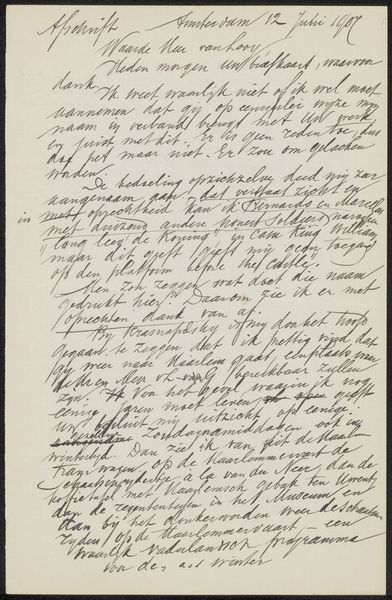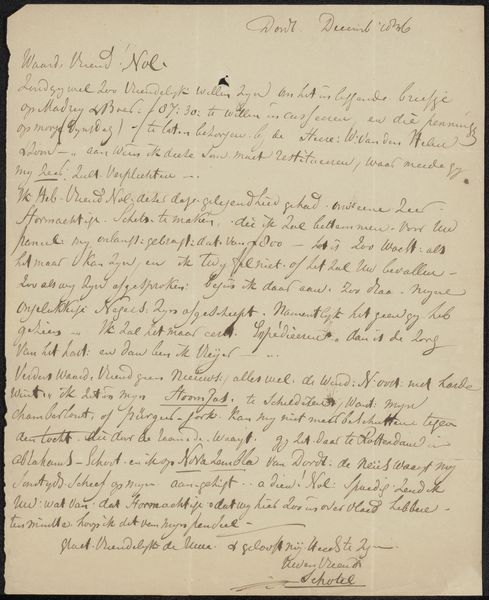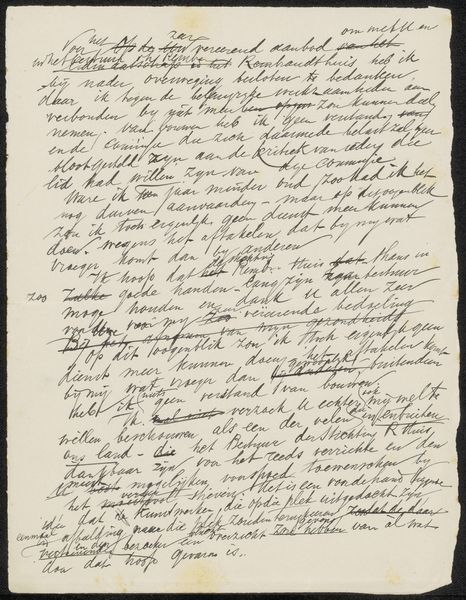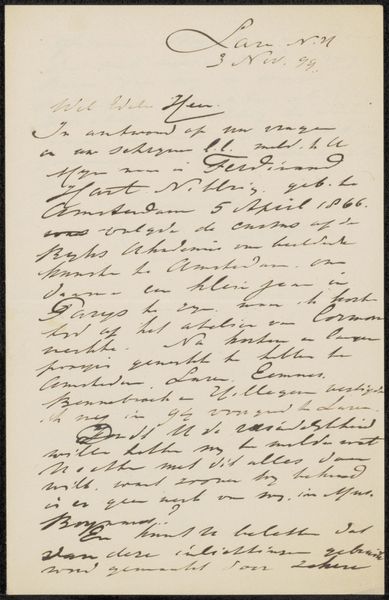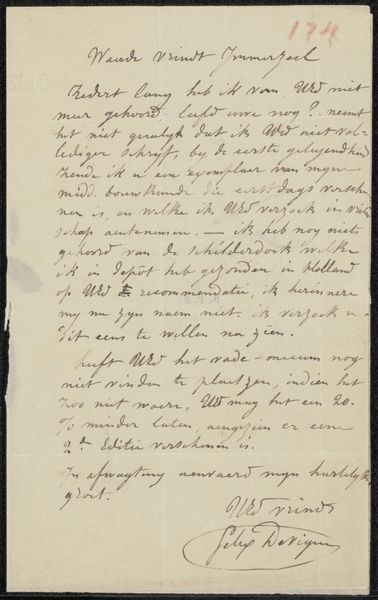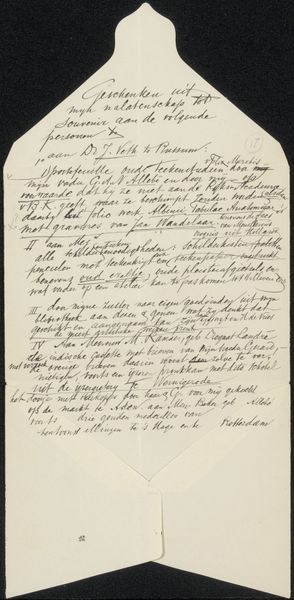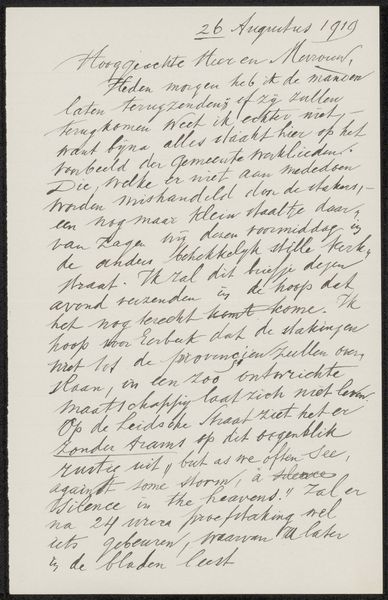
drawing, paper, ink
#
drawing
#
paper
#
ink
#
modernism
#
calligraphy
Copyright: Rijks Museum: Open Domain
Curator: Here we have "Brief aan anoniem," or "Letter to Anonymous," possibly from 1901, by August Allebé. It's ink on paper and held at the Rijksmuseum. The script is flowing but illegible to me, and my immediate impression is that it seems more like an abstract pattern than an actual letter. Given your expertise, what cultural and historical elements do you observe in this artwork? Editor: That's a good initial read. This piece hits me more as a document of institutional critique. We have what appears to be formal correspondence, perhaps from within an organization, given phrases like "de Candidatuur" [the Candidacy]. Think about the period—the turn of the century saw a huge boom in social reform movements and labour organization in the Netherlands, which Allebé was sympathetic to. Does this calligraphic style suggest anything to you about its intended audience and the broader social currents at play? Curator: That's interesting. The flowing script, while beautiful, creates a sense of opacity. Who was supposed to decipher it? Could it have been accessible only to a select few, perhaps within the movement itself, underscoring an 'us versus them' dynamic, particularly between different groups in the 'New Order' described mid-way? This could imply a deliberate strategy of internal communication meant to both include and exclude. Editor: It reminds me how so much meaning gets shaped by who *gets* access. A member's only missive creates exclusivity through obfuscation. Considering it as an art object adds layers. Curator: Exactly. Think about how museums contextualize these sorts of items. They can democratize or restrict meaning through exhibit design. Allebé created an object to navigate this tension between access and secrecy in its time. We interpret it navigating those tensions still today. Editor: I hadn’t considered the interplay between exclusion and a kind of avant-garde inaccessibility. I see that now. Thanks! Curator: Likewise, your perspective is fascinating and reminds me how context radically transforms interpretation!
Comments
No comments
Be the first to comment and join the conversation on the ultimate creative platform.
